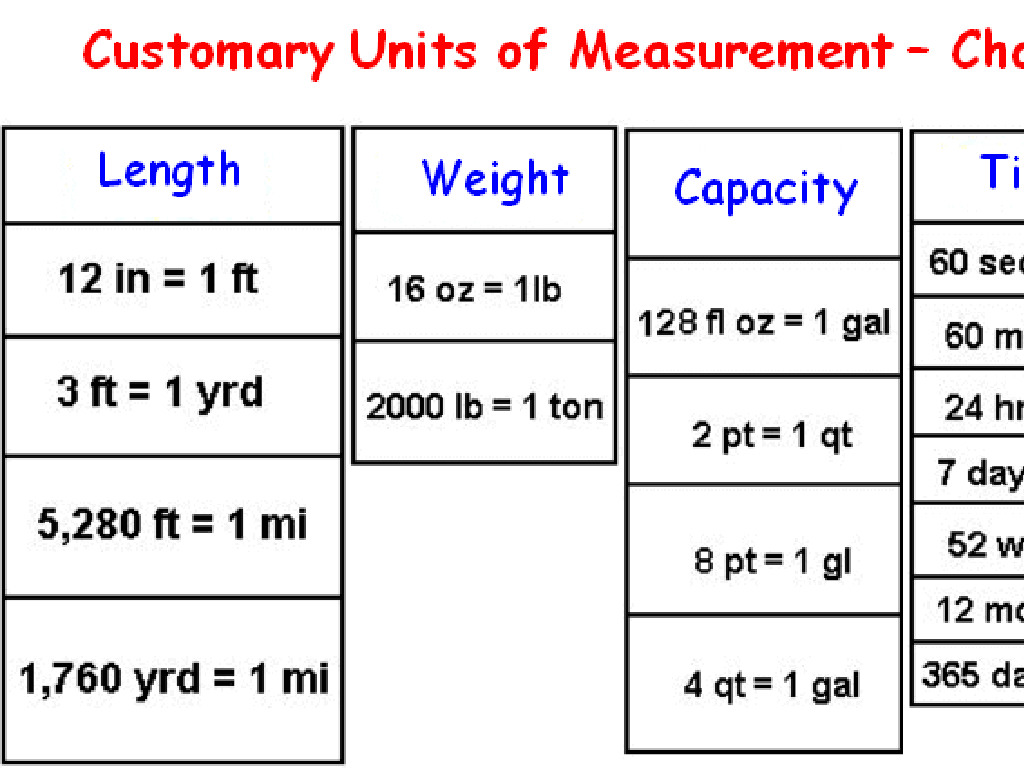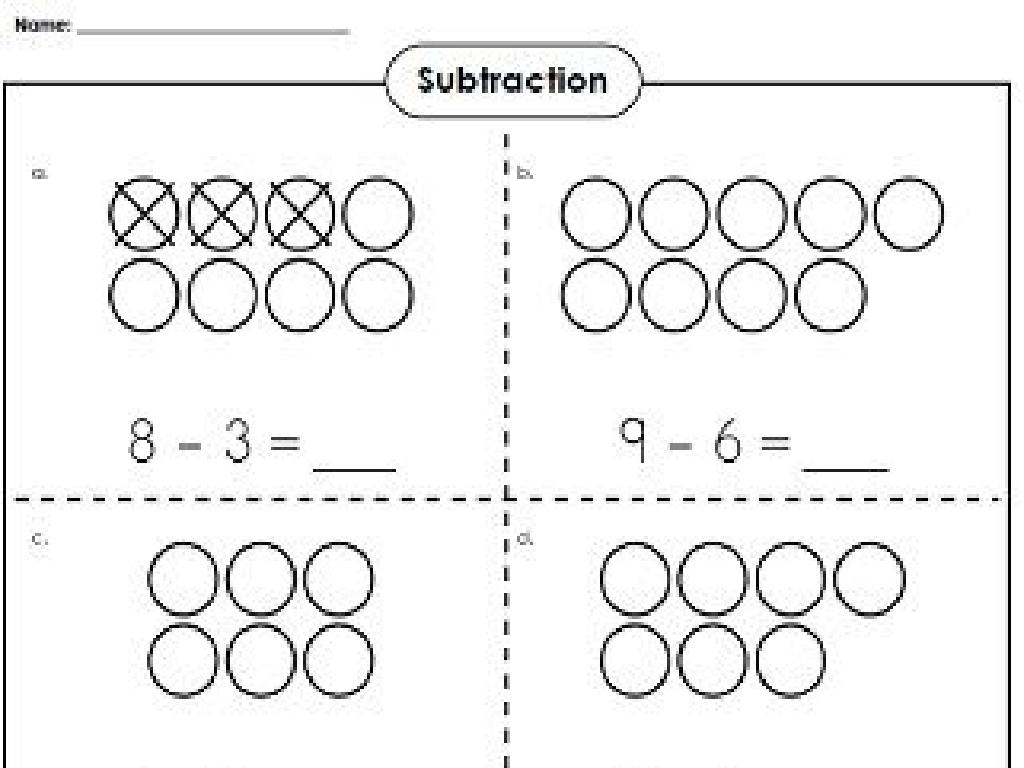Solutions Acids And Bases"
Subject: Science
Grade: High school
Topic: Chemistry
Please LOG IN to download the presentation. Access is available to registered users only.
View More Content
Introduction to Solutions, Acids, and Bases
– Defining solutions, acids, and bases
– Solutions are mixtures, acids donate protons, bases accept them
– Common examples in daily life
– Vinegar (acidic), baking soda (basic), saltwater (solution)
– Exploring the pH scale
– pH measures acidity/basicity, scale ranges from 0-14
– Significance of pH in chemistry
|
This slide introduces the fundamental concepts of solutions, acids, and bases in chemistry. Solutions are homogeneous mixtures of two or more substances, while acids and bases are two classes of compounds that react with each other. Use everyday examples like vinegar and baking soda to make the concepts relatable. Discuss the pH scale as a measure of how acidic or basic a solution is, with 7 being neutral. Emphasize the importance of pH in various chemical processes and its applications in fields like medicine, agriculture, and environmental science. Encourage students to think of more examples and consider the pH of substances they encounter daily.
Understanding Solutions in Chemistry
– Define a chemical solution
– A homogeneous mixture of two or more substances
– Identify solute and solvent
– Solute: substance dissolved; Solvent: does the dissolving
– Explore solution characteristics
– Uniform composition, clear, not easily separated
– Discuss solution interactions
|
This slide introduces the concept of solutions in chemistry, which is crucial for understanding many processes in science. A solution is defined as a homogeneous mixture, meaning it has the same uniform appearance and composition throughout. Common examples include salt water and sugar in tea. The solute is the substance that is dissolved, while the solvent is the substance that dissolves the solute. Characteristics of solutions include having a uniform composition, being clear, and not easily separated by filtration or settling. Solutions play a vital role in various chemical reactions, especially in the context of acids and bases, which will be explored in subsequent slides. Encourage students to think of everyday examples of solutions they encounter to help them relate to the concept.
Exploring Types of Solutions
– Understanding solubility
– Solubility is the max amount of solute that can dissolve in a solvent at a given temperature.
– What is saturation?
– Saturation point: when a solution can no longer dissolve more solute.
– Concentration concepts
– Concentration refers to the amount of solute in a given volume of solution.
– Common solution examples
– Saltwater and sugar in tea are everyday examples of solutions.
|
This slide introduces students to the fundamental concepts of solutions in chemistry, focusing on solubility, saturation, and concentration. Solubility is a key property that determines how much solute can be dissolved in a solvent at a specific temperature and pressure. Saturation is the point at which the solvent can no longer dissolve additional solute, leading to the formation of a precipitate if more solute is added. Concentration is a measure of how much solute is present in a given volume of solvent, often expressed in molarity or mass per volume. Use everyday examples like saltwater and sugar in tea to help students relate these concepts to real-life scenarios. Encourage them to think of other common solutions and consider their solubility and concentration.
Acids and Bases: Properties and the pH Scale
– Characteristics of acids
– Sour taste, react with metals, turn blue litmus red
– Characteristics of bases
– Bitter taste, slippery feel, turn red litmus blue
– Common examples in everyday life
– Citric acid in citrus fruits, sodium hydroxide in soaps
– Understanding the pH scale
– Measures acidity/alkalinity, ranges from 0 to 14
|
This slide aims to introduce students to the fundamental properties of acids and bases, providing a foundation for understanding their role in chemistry. Acids are substances with a sour taste that can react with metals and change the color of blue litmus paper to red. Bases, on the other hand, are characterized by a bitter taste and a slippery feel; they turn red litmus paper blue. Everyday examples include citric acid found in citrus fruits and sodium hydroxide found in cleaning soaps. The pH scale is a crucial concept that quantifies the level of acidity or alkalinity of a solution on a scale from 0 to 14, with 7 being neutral. Understanding the pH scale is essential for predicting the behavior of substances in different chemical reactions. Encourage students to bring in examples of household acids and bases and to test their pH levels using litmus paper or pH strips.
The pH Scale: Acidity and Basicity
– Understanding the pH scale
– A scale that measures how acidic or basic a solution is, ranging from 0 to 14
– Classifying solutions by pH
– Acidic solutions have a pH less than 7, neutral solutions have a pH of 7, and basic solutions have a pH greater than 7
– Using pH indicators
– Substances like litmus paper or universal indicator can determine the pH value of a solution
– Importance of pH in chemistry
|
The pH scale is a crucial concept in chemistry that allows us to quantify the acidity or basicity of a solution. A pH of 7 is considered neutral, like pure water. Values below 7 indicate acidity, which increases as the number decreases. Values above 7 indicate basicity, which increases as the number goes up. Common indicators include litmus paper, which turns red in acidic environments and blue in basic ones, and universal indicator, which shows a range of colors depending on the pH level. Understanding pH is essential for many scientific fields, including biology, medicine, and environmental science.
Neutralization Reactions in Chemistry
– Mixing acids and bases
– Acids and bases react to form salt and water
– Understanding neutralization
– Neutralization: acid and base produce a neutral solution
– Applications in everyday life
– Used in agriculture, medicine, and manufacturing
– Impact of neutralization
– Neutralization can affect environmental pH balance
|
This slide introduces the concept of neutralization reactions, which occur when an acid and a base mix together, resulting in the formation of water and a salt. It’s important to explain that neutralization is the process by which acids and bases cancel out each other’s properties, leading to a solution that is neither acidic nor basic. Real-life applications are vast, including adjusting soil pH for agriculture, treating acid indigestion with antacids in medicine, and in various industrial processes. Discuss the environmental impact, such as how neutralization can be used to manage the pH of acid rain-affected water bodies. Encourage students to think critically about how this chemical process is utilized in various fields and its significance in maintaining ecological balance.
Acid-Base Titration: Understanding Concentration
– Titration process explained
– Gradual addition of one solution to another to reach a reaction endpoint
– Determining unknown solution concentration
– Use titration to find the molarity of an unknown acid or base
– Analyzing the titration curve
– Graph showing volume of titrant vs. pH level; reveals reaction’s progress
– Equivalence point significance
– The point where equal amounts of acid and base have reacted
|
This slide introduces the concept of acid-base titration, a laboratory method used to determine the concentration of an unknown solution. The process involves the slow addition of a solution of known concentration (titrant) to a solution of unknown concentration until the reaction reaches its endpoint, indicated by a color change or pH meter. Students should understand how to interpret a titration curve, which plots the change in pH against the volume of titrant added, and identify the equivalence point the moment when the amount of titrant added is stoichiometrically equivalent to the substance in the unknown solution. Emphasize the importance of precision and the use of indicators in this analytical technique. Provide examples of titration in real-world applications, such as water quality testing or pharmaceuticals.
Class Activity: pH Testing of Household Substances
– Test pH with common items
– Use litmus paper and pH meters
– Litmus paper changes color, pH meters give numerical value
– Record your observations
– Note color changes or numbers
– Discuss results and conclusions
– What do the results tell us about the substance?
|
In this hands-on class activity, students will explore the concept of pH by testing various household substances. Provide a range of items with different acidity or basicity levels, such as lemon juice, baking soda solution, soap, and tap water. Students will use litmus paper, which changes color depending on the pH level, and pH meters that give a digital reading. They should record their observations, noting the color change in the litmus paper or the numerical value from the pH meter. After testing, students will discuss their results and draw conclusions about the properties of each substance. Possible activities include testing the effect of dilution on pH, comparing natural versus synthetic substances, or exploring the pH of body fluids. This will help them understand the practical applications of acids and bases in everyday life.






